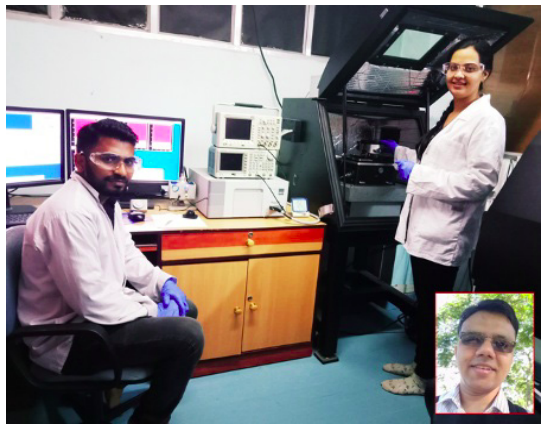


Researchers manipulate new knowledge on perovskite ferroelectricity to enhance piezoelectric effect and create nanogenerators.

Richa Pandey (right) and SB Gangadhar (left), who developed the FASnI3 PENGs. Inset: Prof Dinesh Kabra, who supervised the research.
The reach of piezoelectric nanogenerators (PENGs) is limited by the high toxicity of lead-containing ceramics such as Pb(Zrx Ti1 -x)O3 (PZT). But now that scientists at IIT Bombay in collaboration with Applied Materials Pvt Ltd, India, IISER Pune, IITD and JNCASR have unveiled the origin of ferroelectricity in lead-free hybrid perovskites, there may be a safer alternative. Indeed, PENGs made with their new technology could be perfect for powering self-sustainable devices such as pacemakers, health monitors and microsensors. After unravelling the ferroelectric mechanism in FASnI3 , the researchers set about enhancing the effect by incorporating the perovskite into a ferroelectric polymer and by carefully combining these two active components, they were able to further enhance the piezoelectric response to 73 pm/V. This unprecedented performance led the researchers to consider possible applications. “PENGs create electrical power by squeezing piezoelectric materials. As FASnI3 produces one volt each time the latice contracts by 73 pm, it is an ideal candidate for such an application,” The researchers’ hypothesis was confirmed by developing a device with the novel material and measuring the 23 V generated, an unprecedented high amongst existing lead-free PENGs.